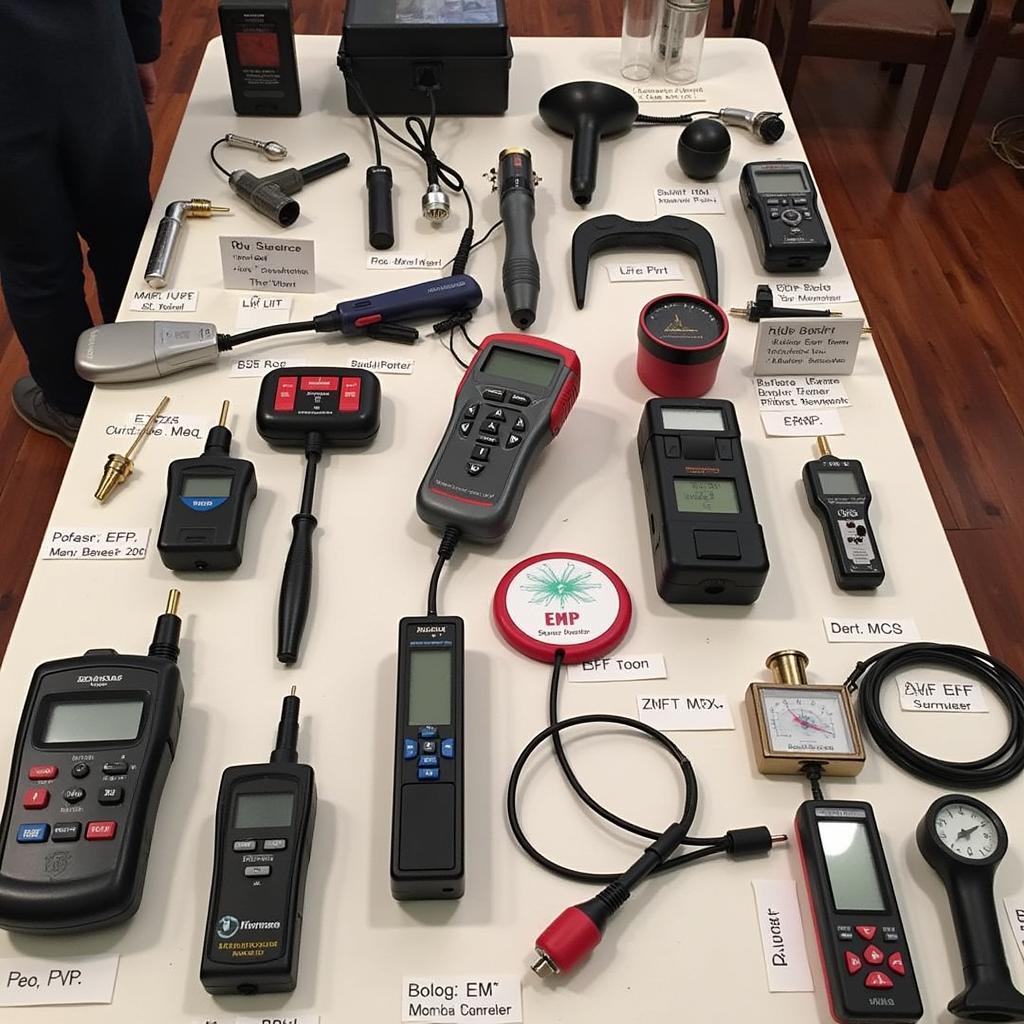Diagnostic Research Design plays a crucial role in the realm of paranormal investigation. This approach delves into the heart of unexplained phenomena, seeking to identify the root cause of unusual occurrences. Unlike other research designs that focus on correlation or exploration, diagnostic research aims to pinpoint the “why” behind the “what.”
Delving into the “Why”
Imagine this: a house plagued by strange noises, objects moving on their own, and a pervasive feeling of unease. This scenario, familiar to many paranormal enthusiasts, is where diagnostic research comes into play. Instead of merely documenting these events, we seek to answer:
- What type of entity or energy might be responsible?
- Is there a historical event tied to the location that could explain the activity?
- Are there any environmental factors influencing the phenomena?
 Paranormal Investigation Tools
Paranormal Investigation Tools
By meticulously gathering data, analyzing evidence, and considering various hypotheses, we strive to understand the underlying reasons for the paranormal activity. This often involves a multi-faceted approach, combining traditional scientific methods with specialized techniques developed specifically for Paranormal Research.
Key Characteristics of Diagnostic Research Design
Several key characteristics define diagnostic research design in a paranormal investigation context:
-
Problem Identification: We clearly define the specific paranormal phenomenon under investigation, such as ghostly apparitions or poltergeist activity.
-
Hypothesis Formulation: We develop potential explanations for the phenomenon, such as residual energy, spiritual attachment, or even psychological factors.
-
Data Collection: We employ various methods to gather data, including eyewitness accounts, electronic voice phenomena (EVP) recordings, and environmental readings.
-
Data Analysis: We rigorously analyze the collected data, seeking patterns, anomalies, and any evidence that supports or refutes our hypotheses.
-
Conclusion and Recommendations: We draw conclusions based on the evidence gathered and recommend further actions, such as cleansing rituals, historical research, or even seeking the help of qualified paranormal professionals.
The Significance of Diagnostic Research in Paranormal Investigation
“Diagnostic research is the linchpin of credible paranormal investigation,” states Dr. Emily Carter, a leading researcher in parapsychology. “It elevates our work from mere ghost hunting to a disciplined pursuit of understanding the unknown.” By employing a diagnostic approach, we:
-
Enhance Credibility: A systematic and analytical approach lends credibility to paranormal investigation, moving it away from subjective interpretations towards a more evidence-based field.
-
Facilitate Effective Interventions: By identifying the root cause, we can recommend appropriate and effective interventions, whether it’s historical research, spiritual cleansing, or simply addressing environmental factors.
-
Expand Our Understanding: Each investigation, approached with a diagnostic lens, contributes to the growing body of knowledge surrounding the paranormal, helping us better understand the mysteries that lie beyond our current comprehension.
Conclusion
Diagnostic research design serves as the cornerstone for meaningful and insightful paranormal investigations. By seeking to understand the “why” behind the “what,” we unlock the potential for real progress in this fascinating and often misunderstood field. Through rigorous investigation, careful analysis, and a commitment to uncovering the truth, diagnostic research paves the way for a deeper understanding of the world beyond our senses.